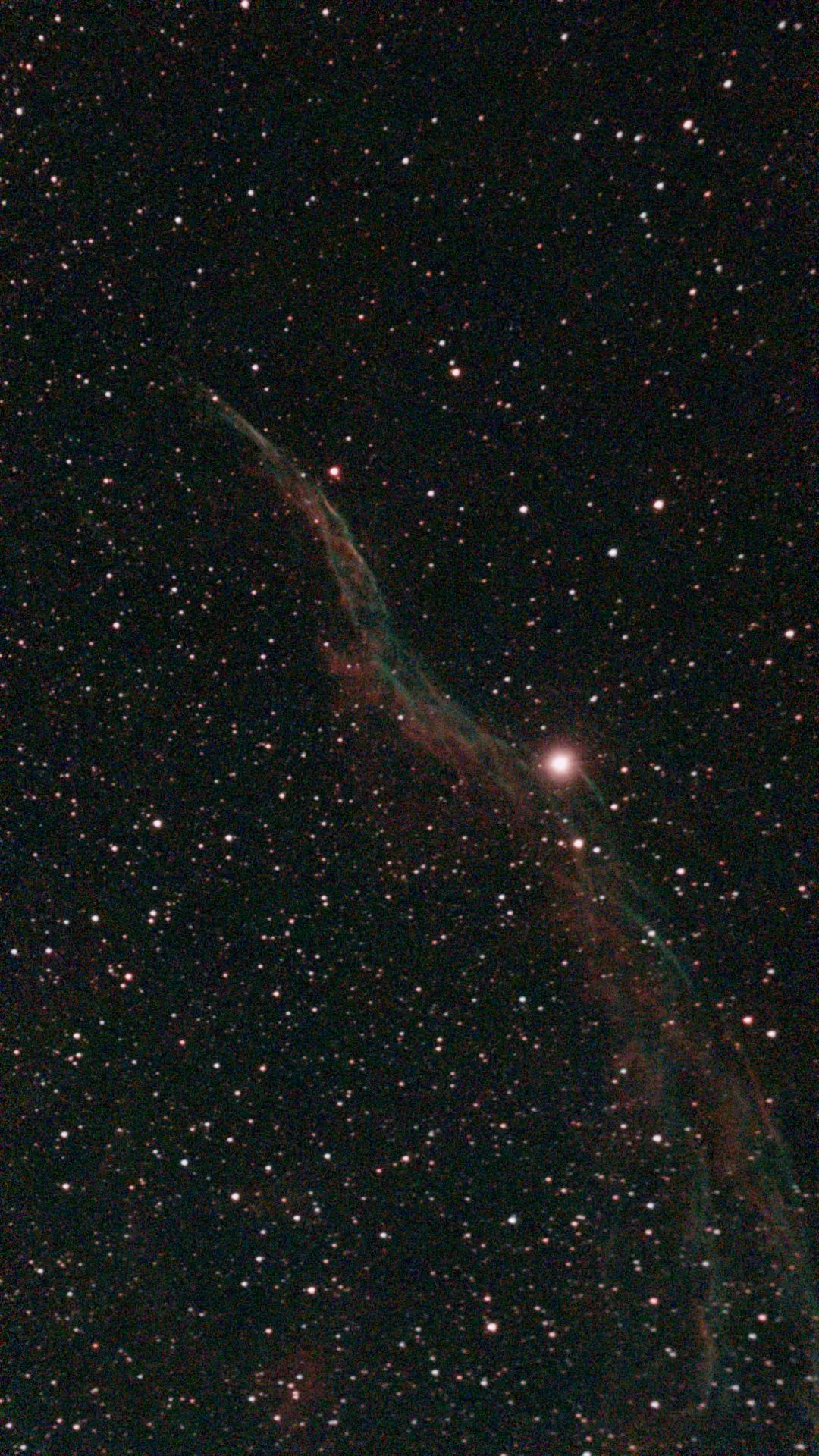Unveiling the Cosmic Tapestry: Capturing the Veil Nebula from My Backyard
There's something truly magical about bringing the distant wonders of the universe into your own home, especially when that home happens to be in a light-polluted suburban backyard. Today, I'm thrilled to share a recent capture of one of the sky's most ethereal and dramatic objects: the Veil Nebula.
The Veil Nebula: A Supernova's Explosive Legacy
The Veil Nebula is not just a single object but a vast, sprawling complex of ionized gas and dust, part of the larger Cygnus Loop. It's the spectacular remnant of a massive star, estimated to be 15 to 20 times the mass of our Sun, which met its violent end in a supernova explosion approximately 8,000 to 10,000 years ago. This cosmic catastrophe occurred when early humans were still navigating the Stone Age, yet its light and effects continue to ripple across space and time, reaching us today.
Located about 2,400 light-years away in the constellation Cygnus, the Veil Nebula spans an astonishing 110 light-years in diameter. What we see are the intricate, wispy filaments of gas, still expanding outwards at hundreds of kilometers per second. These filaments glow vividly as the shockwaves from the ancient explosion collide with and heat the surrounding interstellar medium. Different colors within the nebula often indicate different elements: hydrogen typically glows red, while oxygen emissions contribute to the prominent blue-green hues seen in many astrophotographs.
Bringing the Cosmos Home: The Art and Challenge of Backyard Astrophotography
Capturing an object as faint and detailed as the Veil Nebula from a backyard presents a unique set of challenges, particularly dealing with urban light pollution. This is where the art of astrophotography truly comes into its own, demanding patience, precision, and a bit of technological wizardry.
My setup typically involves a high-quality telescope mounted on a precise equatorial mount that tracks the sky's motion, paired with a specialized cooled astrophotography camera. However, the real secret to unveiling nebulae like the Veil from brighter skies often lies in narrowband imaging. This technique uses filters that allow only very specific wavelengths of light – those emitted by particular elements like hydrogen-alpha (Hα) and oxygen-III (OIII) – to reach the camera. By doing so, we effectively filter out much of the urban glow, allowing the faint emissions of the nebula to shine through.
Collecting the data involves hours of long exposures, often spread across multiple nights to accumulate enough light. Each raw image is then meticulously calibrated (using darks, flats, and bias frames) and stacked to improve the signal-to-noise ratio. The final and most artistic step is processing the stacked data, stretching the faint signals to reveal the intricate structures and vibrant colors that are completely invisible to the naked eye. The immense satisfaction of seeing such incredible cosmic beauty emerge from what initially seemed like dark, noisy frames is truly unparalleled.
 Caption: The breathtaking Veil Nebula, an ancient supernova remnant, beautifully captured from a backyard observatory.
Caption: The breathtaking Veil Nebula, an ancient supernova remnant, beautifully captured from a backyard observatory.
Beyond the Pixels: A Window to Cosmic Violence and Beauty
Beyond its sheer aesthetic appeal, the Veil Nebula serves as a critical celestial laboratory for astronomers. Supernova remnants are fundamental to our understanding of stellar evolution, the life cycles of massive stars, and how heavy elements (forged in the stellar furnace and dispersed in the explosion) enrich the interstellar medium, providing the building blocks for new stars, planets, and even life itself.
To think that such a vast and powerful event, thousands of light-years away and millennia ago, can be brought into focus from a small patch of Earth is a testament to both human ingenuity and the boundless wonders of the universe. It reminds us of our unique place in the cosmos and the incredible stories written across the night sky.
So, next time you look up, remember that even from seemingly ordinary places, extraordinary cosmic tales are waiting to be unveiled. Keep looking up, and who knows what wonders you might discover!



